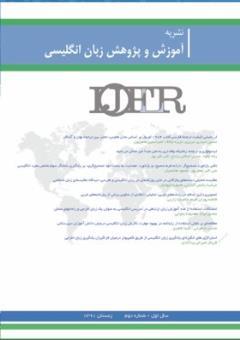Gendered Language and Power Dynamics in White House Press Briefings: A Critical Discourse Analysis of Deictic Expressions, Modal Verbs, and Relational Language
Subject Areas :Ahmed Hamad Kareem 1 , Sahar Najarzadegan 2 , Mahmood Kadir Ibrahim 3 , Fatinaz Karimi 4
1 - Department of English Languages, Isfahan (Khorasgan) Branch, Islamic Azad University, Isfahan, Iran
2 - Department of English Languages, Isfahan (Khorasgan) Branch, Islamic Azad University, Isfahan, Iran
3 - English Department, Baghdad, Imam Ja’afar Al-Sadiq University, College of Education, Kirkuk, Iraq
4 - Department of English Languages, Isfahan (Khorasgan) Branch, Islamic Azad University, Isfahan, Iran
Keywords: Critical Discourse Analysis, gendered language, White House press briefings, deictic expressions, modal verbs, political discourse,
Abstract :
This article performs a CDA on White House press briefings and is especial in its focus on how gendered language impacts relations of power. Adopting a mixed-method approach, this study will examine linguistic strategies and deictic expressions used by male and female spokespersons articulating ideologies and constructing authority. The latter is based on Fairclough's three-dimensional CDA model, whereby text analysis is involved, together with discourse practices and social context in explaining how language reflects and constructs political realities. The research questions were as follows: (1) How are deictic expressions used by spokesmen and spokeswomen in the White House press briefings? (2) What is the inter-relationship between power and language through the usage of modal verbs, and is there a gender-based difference herein? (3) How do women spokespersons, through language, claim ideologies and power? It is a contribution to applied linguistics and presents evidence of subtle linguistic mechanisms that shape public perception of gendered language in political discourse.
The research questions were as follows: (1) How are deictic expressions used by spokesmen and spokeswomen in the White House press briefings? (2) What is the inter-relationship between power and language through the usage of modal verbs, and is there a gender-based difference herein? (3) How do women spokespersons, through language, claim ideologies and power? It is a contribution to applied linguistics and presents evidence of subtle linguistic mechanisms that shape public perception of gendered language in political discourse.
Bayram, F. (2010). Ideology and political discourse: A critical discourse analysis of Erdogan’s political speech. ARECLS, 7, 23–40.
Cap, P. (2013). Proximization: The pragmatics of symbolic distancing in political discourse. John Benjamins Publishing.
Chilton, P. (2004). Analyzing political discourse: Theory and practice. Routledge.
Fairclough, N. (1992). Discourse and social change. Polity Press.
Fairclough, N. (1995). Critical discourse analysis: The critical study of language. Longman.
Fairclough, N. (2004). Semiotic aspects of social transformation and learning. In Linguistics and Education, 15(1-2), 87–97.
Fairclough, N. (2010). Critical discourse analysis: The critical study of language (2nd ed.). Routledge.
Holmes, J. (2006). Gendered talk at work: Constructing gender identity through workplace discourse. Discourse and Society, 17(4), 543–548.
Jørgensen, M. W., & Phillips, L. J. (2013). Discourse analysis as theory and method. SAGE Publications.
Lakoff, R. (1975). Language and woman’s place. Harper & Row.
Lakoff, R. (2004). Language and woman’s place: Text and commentaries (Rev. ed.). Oxford University Press.
Lazar, M. M. (2005). Politicizing gender in discourse: Feminist critical discourse analysis as political perspective and praxis. In Feminist critical discourse analysis (pp. 1–28). Palgrave Macmillan.
Lazar, M. M. (2014). Feminist critical discourse analysis: Gender, power and ideology in discourse. Palgrave Macmillan.
Levinson, S. C. (1983). Pragmatics. Cambridge University Press.
Musolff, A. (2016). Political metaphor analysis: Discourse and scenarios. Bloomsbury.
Van Dijk, T. A. (1997). Discourse as structure and process. SAGE Publications.
Van Dijk, T. A. (1998). Ideology: A multidisciplinary approach. SAGE Publications.
Van Dijk, T. A. (2001). Multidisciplinary CDA: A plea for diversity. In Methods of critical discourse analysis (pp. 95–120). SAGE Publications.
Walsh, C. (2001). Gender and discourse: Language and power in politics, the church, and organizations. Discourse & Society, 12(5), 707–736.
Wodak, R., & Meyer, M. (Eds.). (2009). Methods of critical discourse analysis (2nd ed.). SAGE Publications.
Wodak, R., & Meyer, M. (2016). Methods of critical discourse studies (3rd ed.). SAGE Publications.

